
Chitral is a city situated on the Chitral River in northern area of Khyber Pakhtunkhwa. It serves as the capital of the Lower Chitral District, and was previously the capital of Chitral District, and before that the capital of Chitral princely state. The region was encompassed into West Pakistan between the years 1969 and 1972. It has a population of 49,780 per the 2017 census.

Yasin Valley is a high-altitude mountain valley nestled in the Hindu Kush mountain range, located in the northern region of the Gupis-Yasin District within Gilgit-Baltistan. The valley is situated approximately 148 kilometers from the city of Gilgit, which serves as the capital of Gilgit-Baltistan. Within the valley's territory lies Yasin Tehsil, an administrative subdivision of the region.

Ghazi Khan Umra Khan of Jandol, also called "The Afghan Napoleon", was a Pashtun chief on the north-western frontier of British India, who was chiefly responsible for the Chitral Expedition of 1895. He was the Khan of Jandol and captured the state of Dir and reigned as its Nawab from 1890 to 1895. Umra briefly occupied Swat, Chitral and Bajaur. He also took over Kunar and Kafiristan regions of Afghanistan.
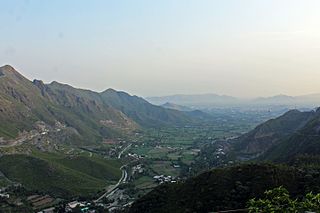
Malakand District is a district in the Malakand Division of the Khyber Pakhtunkhwa province of Pakistan.
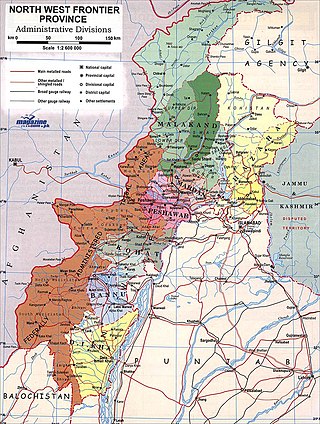
The Malakand Agency was one of the agencies in the North West Frontier Province of British India and later of Pakistan until 2010. It included the princely states of Chitral, Dir and Swat, and an area around the Malakand Pass known as the Malakand Protected Area. The largest city in the area was Mingora, while the three state capitals were Chitral, Dir, and Saidu Sharif. In 1970, following the abolition of the princely states, the agency became the Malakand Division, which was divided into districts, one of which was the Malakand Protected Area, known as Malakand District. In 2000 the Malakand Division was abolished. Despite the constitutional changes since 1970, the expression Malakand Agency is still used, sometimes of the entire area of the former Agency, but more often of Malakand District.
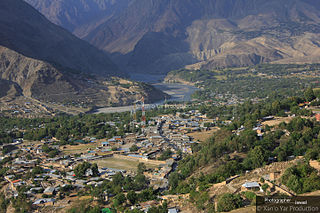
Drosh is a town located in the Lower Chitral District of the Khyber Pakhtunkhwa Province of Pakistan.

The Chitral Expedition was a military expedition in 1895 sent by the British authorities to relieve the fort at Chitral, which was under siege after a local coup following the death of the old ruler. An intervening British force of about 400 men was besieged in the fort until it was relieved by two expeditions, a small one from Gilgit and a larger one from Peshawar.
The Katoor dynasty was a dynasty, which along with its collateral branches ruled the sovereign, later princely state of Chitral and its neighbours in the eastern Hindu Kush region for over 450 years, from around 1570 until 1947. At the height its power under Mehtar Aman ul-Mulk the territory controlled by the dynasty extended from Asmar in the Kunar Valley to Sher Qilla in the Gilgit valley. The Mehtar of Chitral was an influential player in the power politics of the region as he acted as an intermediary between the rulers of Badakhshan, the Yousafzai pashtuns, the Maharaja of Kashmir and later the Amir of Afghanistan.
Chitral Bodyguard or informally the Mehtar's Bodyguard, was a military force under the direct command of the Mehtar of the princely state of Chitral.
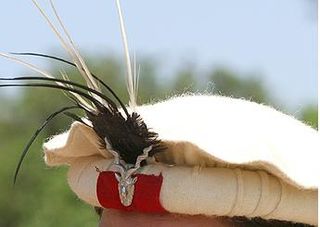
The Chitral Scouts (CS), also known as Chitral Levies, originally raised in 1903 as the militia of the princely state of Chitral, is now part of the Frontier Corps Khyber Pakhtunkhwa (North) of Pakistan. They are recruited mostly from the Chitral and Kalash Valleys areas along the western borders and are led by officers from the Pakistan Army. The Frontier Corps of Khyber Pakhtunkhwa (North) falls under the control of the Ministry of the Interior. Its headquarters is at Chitral town, and it is commanded by a Colonel of the Pakistan Army.
The Princely States of Pakistan were princely states of the British Indian Empire which acceded to the new Dominion of Pakistan between 1947 and 1948, following the partition of British India and its independence.

His Highness Sir Shuja ul-Mulk KCIE was the Ruler of the State of Chitral, and reigned it for 41 years until his death in 1936. He belonged to the royal Katur dynasty, which ruled the state from 1571 to 1969, until the Princely State of Chitral was merged to form the Chitral District of the Provincially Administered Tribal Areas, Malakand Division, North West Frontier Province, Pakistan.

Aman ul-Mulk was the Mehtar of Chitral, Ghizer, Yasen and Ishkoman and Suzerain of Kafiristan. He ruled the State of Chitral from 1857 to 1892. His rule saw Chitral reach its territorial peak, extending from Ishkamun in Gilgit Agency to Asmar in Afghanistan. His death led to the Siege of Chitral, an instance of high drama which goes down in the annals of British India as an epic of enormous courage and determination.
His Highness Sir Nasir ul-Mulk KCIE was the eldest son of Mehtar Shuja ul-Mulk, who succeeded him in 1936. He ruled the princely state of Chitral from 1936 to 1943.

His Highness Muzaffar ul-Mulk was the Mehtar of Chitral who reigned from 1943 to 1949. He took the important decision of Chitral's accession to Pakistan in 1947. He also dispatched his army into Gilgit in August 1947, to help secure that territory for Pakistan.
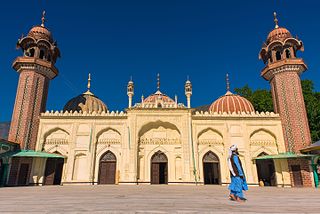
The Shahi Mosque is the main mosque in the town of Chitral, Khyber Pakhtunkhwa, Pakistan. It is located on the bank of the Chitral river adjacent to the Chitral Fort. It was the principal mosque of Chitral at the time of the existence of the State of Chitral. The mosque was built on the orders of the ruler Shuja ul-Mulk in 1924.
Nizam ul-Mulk was the Mehtar of the princely state of Chitral and ruled it from 1892 until his assassination in 1895.
Afzal ul-Mulk was the Mehtar (ruler) of the princely state of Chitral who briefly ruled following the death of his father the Mehtar Aman ul-Mulk, usurping the right of his elder brother Nizam ul-Mulk. His reign lasted two months and seven days before he was murdered by his uncle Sher Afzal.

Chitral or Chitrāl was a princely state in alliance with British India until 1947, then a princely state of Pakistan until 1972. The area of the state now forms the Upper and Lower Chitral Districts of the Khyber Pakhtunkhwa, Pakistan.

Fateh-ul-Mulk Ali Nasir is a Pakistani politician and the current head of the Royal House of Katur and ceremonial Mehtar of Chitral.


















